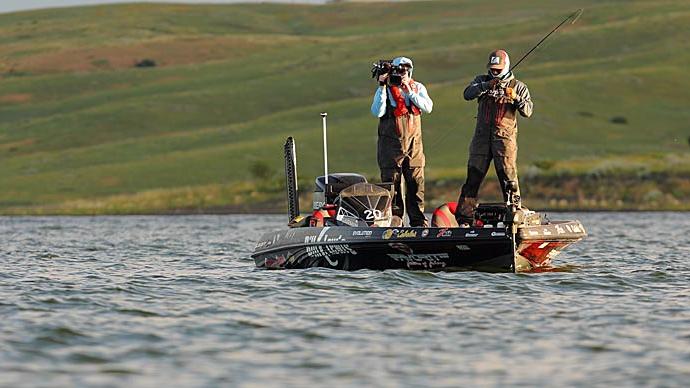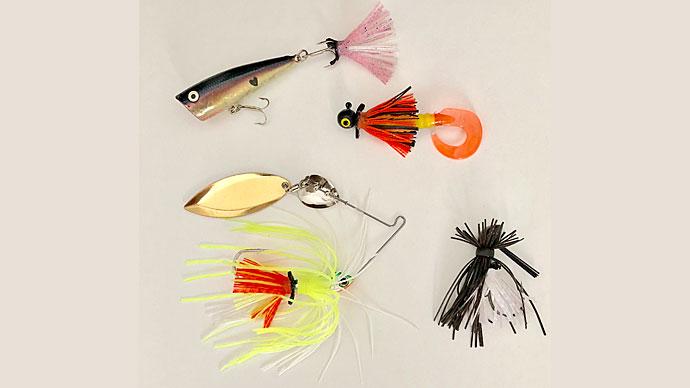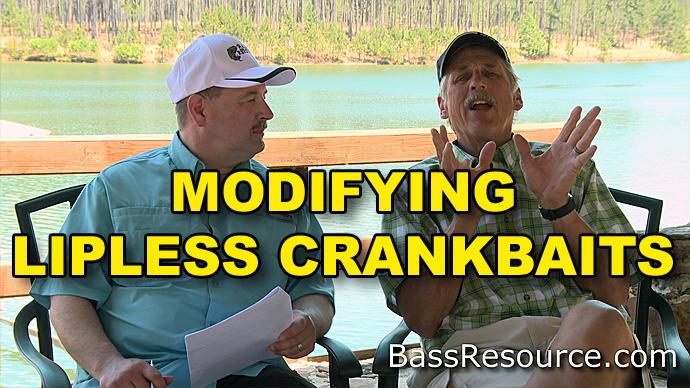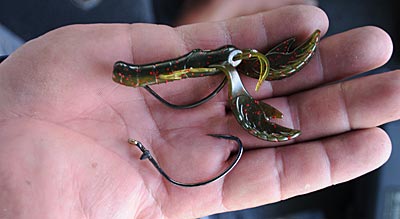
Tinkering with their tackle and baits is a tactic the touring pros dote on to gain an advantage over their competition.
Major League Fishing (MLF) pro Terry Scroggins has several tinkering tricks he relies on to improve his tackle at home or on the water.
“When you buy something off the shelf and use it, you just settle for what everybody else is using, but when you start tinkering around and use your imagination, everybody is different, and everybody has different thoughts,” says Scroggins, who estimates he modifies about 50 percent of his lures. “So just a minor adjustment makes that bait do something different because those fish see those same baits over and over and over with today’s lakes getting so much pressure.
“It’s not necessarily that you have something better than somebody else. " You have something the fish have never seen before,” he says. “A lot of times, that makes the difference.”

When he is flipping soft plastics with a 65-pound braid, Scroggins prefers using Kahle saltwater hooks because the hooks are stronger than freshwater ones. “You can lean on the fish as hard as you want, and you are not going to bend that hook,” Scroggins says.
However, the disadvantage to using the saltwater hook is that it is designed without a keeper barb for holding soft plastics, so Scroggins makes his own keeper barb with a piece of 20-pound fluorocarbon line. He wraps the line close to the eye of the hook and ties it into a uni-knot to make the keeper. Then he secures it to the hook with a drop of Super Glue. “You can make it however long you want, but most of the time, I make about four or five wraps, just enough to give it a knob there,” Scroggins says. “If I am out on the water and need a hook with a keeper, it is a quick fix.” He also makes the same type of keeper and affixes it to the bend of his jig hook to keep the jig trailer from sliding up the hook to ensure a better hook set.
The Florida pro also uses heavy fluorocarbon line to create a homemade weed guard for his Chatterbaits. Scroggins uses a 1/8-inch drill bit to drill two holes into the head of the Chatterbait and then inserts strands of 200- or 220-pound saltwater fluorocarbon line into the holes. He secures the line into the lure’s head with J-B Weld epoxy and cuts the line slightly past the hook's point to complete the weed guard. “That allows you to put a Chatterbait anywhere you want,” Scroggins says. “It is more weedless than a jig when you do that.”
Scroggins also has a simple trick for punching holes in his soft plastics to insert rattles into the bait or change the tail action on Zoom Ultra Vibe Speed Craws or Speed Worms. He punches holes into the soft plastics with a 22.-caliber bullet casing. “It is a great punch, and it doesn’t take up any room in your box,” he says. “One casing will last you the whole year unless you lose it.”
The MLF pro improves his Speed Craws and Speed Worms by punching holes in the indented part of the Speed Craw’s pincers and the indented section of the Speed Worm’s tail. “They swim well (without the modification), but if you punch a hole in the center of that deal, it frees the pincers or tails up a lot more, giving it much more movement,” Scroggins says.
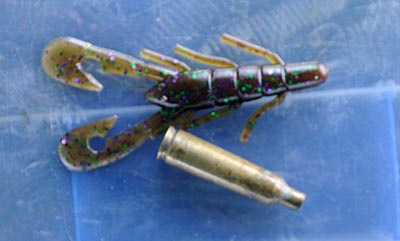
When he is home from the tournament trail, Scroggins works on modifying his topwater prop baits and crankbaits. He improves his topwater prop baits by repositioning the lure’s front hook to make the bait sit down in the water better, which causes the lure to create more disturbance when twitched on the surface.
Scroggins relocates his hooks by drilling a hole in front of the front hook hanger and moving the rear part of the hook hanger forward to the new hole. He seals the leftover hole with epoxy. “Just that minor adjustment allows that bait to sit more level in the water,” Scroggins says. He also takes a pair of pliers and rolls the tips of the props forward, so the props grab more water and create more splash.
The touring pro also tinkers with his crankbaits to give the lures some different action and make the baits dive deeper. “They are all good out of the package, but I like to tinker around with them just because I have the time to do it,” he says.
Scroggins can make his crankbaits dive deeper by shaving the bills of the lures with sandpaper or heating the bills and bending them into a spoon shape. Sanding the bills also gives his crankbait a unique running action.
Whether at home or on the water, Scroggins will tinker with his tackle to try and stay ahead of the competition.


